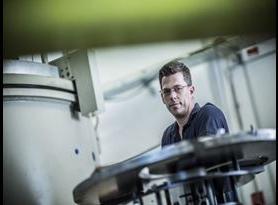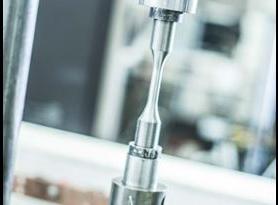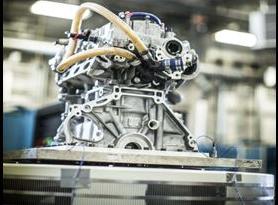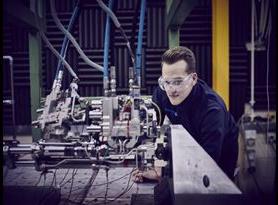A Guide to Dynamics Test Methods
Dynamics testing evaluates components in high-stress, high-performance environments. Usually these environments simulate the real-life conditions that would be encountered on the intended platform with margins added. Components are submitted for testing under laboratory conditions to assess how they will cope with varying degrees and types of vibrations, shock, pressure, noise, and other forces.
Introduction
Dynamics testing is not only vital for certification purposes but also plays a key role in product development and proof of concept prior to certification. Additionally, it is essential for meeting the stringent requirements of the commercial aviation standard RTCA/DO-160 and military qualification standard MIL-STD 810.
These test methods can also be applied to post certification issues, benchmarking an anomaly that has been discovered once a component is already in the field. By accurately reproducing and then repeatedly simulating the damage, the design of the component can then be modified appropriately. This sort of testing is therefore essential in the design, development, certification, and qualification of components across the aerospace, defense, shipboard, rail, and automotive industries; testing products such as fan blades, fuel systems, sensors, airframe systems, turbine engine components, combustors, pumps, and valves, etc. A fan blade off event in a turbine engine, for example, will cause a significant imbalance and vibration that has the potential to result in catastrophic damage across the entire aerostructure.
It is also pivotal to perform dynamic testing to ensure products are not affected by shipping methodologies used today. Shock and vibration induced under transportation can later affect the product’s reliability, efficiency, or overall lifespan.
Element’s dynamics testing portfolio covers a wide range of testing procedures including shock testing, high level reverberant acoustic noise testing, linear/angular acceleration testing as well as the full range of vibration test procedures:
Vibration testing
There are several different types of vibration test procedures, so understanding each method’s approach and benefits is key when selecting a method. The method should be able to replicate the environmental conditions and in-field vibrations (which could be structure or air borne) for a product or component.
Key methods of vibration testing include:
- Electrodynamic testing of components at a low displacement (4-inch DA) / high frequency vibration level (3000Hz). Element’s testing facilities worldwide go up to a maximum of 44,000 force pounds.
- Hydrodynamic testing of components at a high displacement (16-inch DA, low frequency (0-500HZ) vibration, simulating extreme environmental conditions, such as earthquake, aircraft fan blade off / tire burst.
- Piezo testing for testing components at an ultra-high frequency (40-50KHz) such as turbine fan blades.
- Sinusoidal (Sine) vibration testing is used many times to determine a test specimen’s structural (resonance) critical frequencies. This sinusoidal tone can be swept across the test frequency range, or it can be fixed on a single frequency, depending on the requirement. Many times after the critical frequencies are identified, a frequency dwell follows at these frequencies to put the test item under maximum loads.
- Random vibration procedures to cover vibration of a stochastic nature resulting from transportation or operational environments such as aircraft, space vehicles, and land vehicles. Random vibration replicates environments that are unpredictable and non-repetitive. Unlike sine methods, which rely on steady, regular frequency for testing, these methods use uniquely generated patterns to simulate real-world applications.
Sometimes more than one type of method is used, combining multiple vibration methods such as sine-on-random and random-on-random, to create a single composite standard. This can be to assist in meeting the requirements of a project to ensure accurate test conditions or to create an accelerated program.
Shock testing
Shock testing includes shock response spectrum (SRS), half sine, terminal peak saw tooth, pyro shock simulation, and ballistic testing, all of which prepare products for harsh industrial, transportation and military environments. By measuring the impact of sudden acceleration caused by drop or collision, shock testing is able to ensure a product can meet a variety of industrial and military standards, including RTCA DO-160, MIL-STD-810, DEF STAN 00-35 and EN 60068.
Acceleration
Mainly used by the aerospace industry, linear acceleration testing usually utilizes a centrifuge to simulate a g-force that produces mechanical loads on the equipment or components destined for in-flight use. Element uses varying forces and speeds to recreate significant changes in gravitational force, including altitude changes and crash scenarios.
High level acoustic noise testing
Carried out in specialized reverberant chambers, high level acoustic noise tests simulate high level airborne induced vibration. Aerospace and other industrial components are exposed to these intense levels of sound pressure, helping to meet military acoustic testing specifications, such as MIL-STD-810, Method 515.
Combining multiple test types into a single testing program
Highly Accelerated Life Testing (HALT testing) and Highly Accelerated Stress Screening (HASS testing) enable the combining of very rapid thermal high and low temperature cycling (up to 60 deg. C / minute) with high level random vibration (up to 70 GRMS).
HALT testing is frequently used in R&D and design validation to anticipate issues before they arise and avoid costly mistakes that might occur in full-scale testing, or in the field. HALT and HASS testing are also used to test finished components, simulating real-world conditions to uncover hidden defects before the product is sent to market. By monitoring system performance throughout the testing process, Element can provide crucial details about structural vulnerability, thermal reactions, useful life, and more.
Key considerations when preparing to test
Preparing thoroughly for testing will help to maximize a component’s chances of passing its dynamics testing program first time as failures are not always due to the test item itself. One of the most common causes of non-test item related failures is the poor design of the fixture, leading to the over or under testing of the unit.
When preparing to test, it is vital to pay due consideration to the design of the test fixture, which usually requires carefully duplicating the normal means of mounting. If the component will require a ridged mount, or a mount that replicates an installation with a degree of flexibility, should also be determined.
Another key question to ask prior to testing is if the unit under test (UUT) will have to be operated during the test, and if so, what will be the definition of the operation as well as the pass / fail criteria. At this point, it is important to assess if there are critical areas on the UUT that you want to instrument during the test such as accelerometers or strain gages.
The correct zone and category to test at the appropriate input levels should also be determined. If electrical operation is required, the design should incorporate suitable cable lengths from the test item to the test bench. This is a common oversight that frequently causes testing to be delayed. Equally, if hydraulic or pneumatic operation is required, proper connections that will not impart a mechanical load to the test item while under testing must be incorporated into the design.
Building a comprehensive test plan with Element
Element’s team of dynamics experts can develop comprehensive test plans tailored to fit your specific needs, combining multiple test methods to create a single, complete program that ensures product safety while saving time and money.
Working with the manufacturer, we will design the ideal test regime for a component or product at each stage of its life cycle, guiding the manufacturer through the design process and providing invaluable experience and expert advice on issues such as mounting and fixing. Following the tests, detailed professional test reports that can be included in certification packages are provided.
Element’s extensive global capacity provides manufacturers with the very highest vibration testing capabilities to meet testing requirements, allowing a high level of scheduling flexibility. The company’s worldwide facilities include some of the very largest dynamics systems for shock and vibration testing to enable the testing of products with a large footprint, high center of gravity, and off-set loads.
For more information about dynamics testing, please contact our product qualification experts.
Find related Resources
Get white papers, updates and event invites
Subscribe to content updates
Related Services

Structural Dynamics Testing
Find out more about Element’s structural dynamics testing services, which provide reliable, consistent data to the world’s most critical industries. From aerospace to construction, we help ensure that your products are fit for use, no matter what the application.

Fatigue Testing
Element's laboratories help customers characterize the properties and behaviors of materials and components using varying loads, speeds, and environmental conditions to create predictive patterns of future behavior.

Vehicle Dynamics Testing
Element is at the forefront of vehicle dynamics testing, providing critical testing services to clients in the global automotive, defense, rail, aerospace, and transportation sectors.

Vibration and Shock Testing
Element works with manufacturers from the very beginning to try and understand the implications of environmental compliance.
